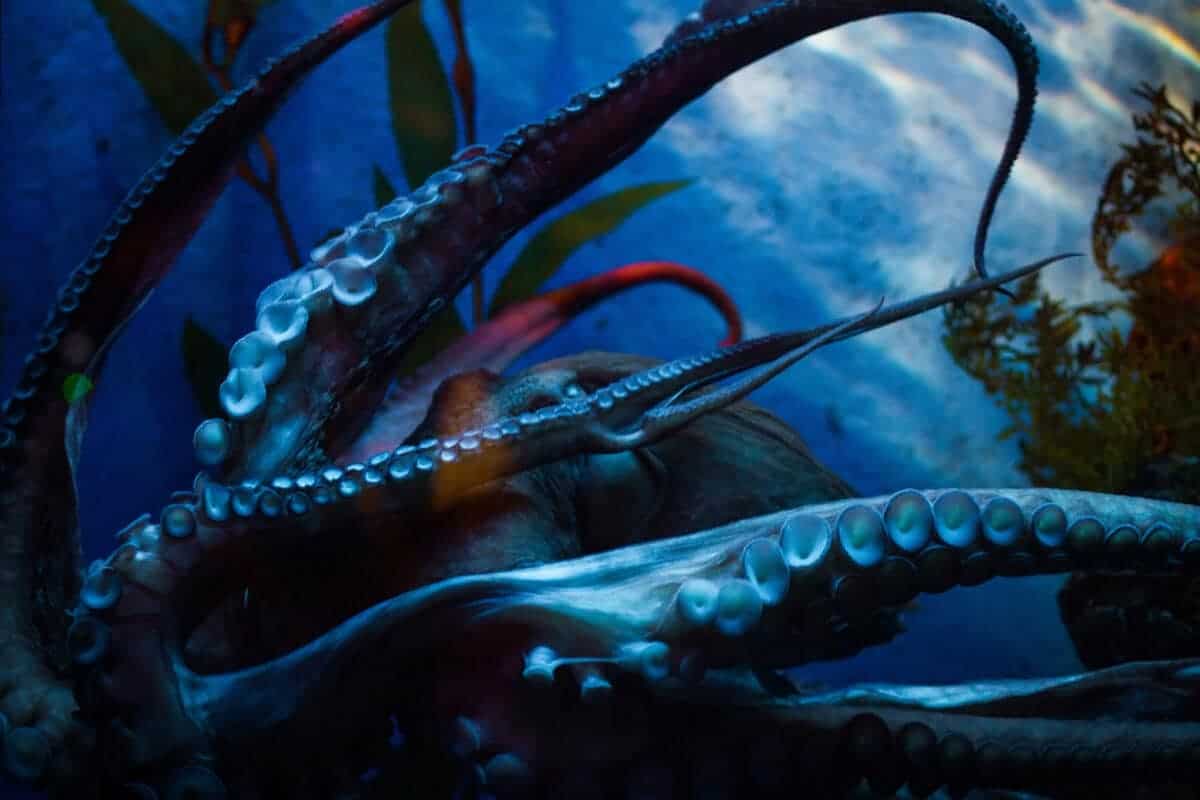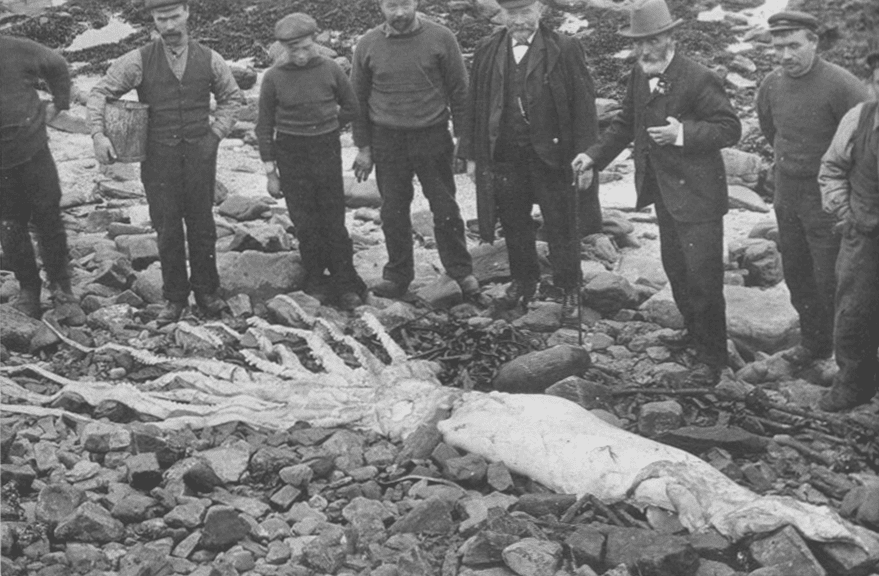During World War II, naval warfare reached unprecedented levels of intensity across the globe’s oceans. Amid the documented battles and engagements, some unusual stories emerged—including alleged encounters between military vessels and marine creatures. Perhaps the most famous of these is the claim that a giant squid attacked a submarine during the war. This tale has captivated the imagination of many, blending elements of naval history with marine biology in a fascinating narrative that continues to intrigue people today. But did such an encounter actually happen? The story merits careful examination of historical records, biological facts, and the context of wartime reporting to separate fact from fiction.
The Origin of the Giant Squid Submarine Attack Story

The most widely circulated version of this story involves the HMS Defender, a British submarine reportedly attacked by a giant squid in the Strait of Malacca near the Indian Ocean in 1940. According to the tale, crew members were on deck when an enormous squid emerged from the waters and wrapped its tentacles around the submarine’s hull. The sailors allegedly fought off the creature with axes and gunfire before it released its grip and disappeared back into the depths. This story first appeared in print during the war years and has been repeated in various books, articles, and documentaries about marine mysteries in the decades since.
Historical Records and Naval Documentation

Despite the story’s persistence, naval historians have found no official documentation of such an incident in British Admiralty records. The HMS Defender was indeed a real vessel, but it was a destroyer, not a submarine, and its service records contain no mention of a squid attack. Other variations of the story attribute the encounter to different submarines from various nations, but similarly, military archives from the United States, Germany, and Japan contain no verified reports of submarines engaging with giant squids during combat operations or patrols. The absence of official documentation raises significant questions about the authenticity of these claims.
The Biological Reality of Giant Squids

The giant squid (Architeuthis dux) is a real and remarkable creature. These deep-sea dwelling cephalopods can reach lengths of up to 43 feet (13 meters), including their tentacles, making them among the largest invertebrates on Earth. However, their behavior and habitat preferences make the reported submarine attack scenario highly improbable. Giant squids typically inhabit depths of 300-1,000 meters (980-3,280 feet) and are rarely seen near the surface. They are primarily deep-water predators that hunt fish and other marine organisms, not metal vessels. The first photographs of a live giant squid in its natural habitat weren’t even captured until 2004, illustrating how elusive these creatures are.
Wartime Storytelling and Propaganda

The context of wartime is crucial to understanding how such a story might have originated and spread. During World War II, navies of all nations faced tremendous psychological pressures, with submarine crews in particular operating in extremely stressful conditions. Sailor stories and tall tales have long been part of maritime culture, and wartime often amplified this tradition. Additionally, some marine encounter stories were deliberately circulated as morale-boosting tales or disinformation designed to distract from actual naval operations. The press during wartime was also subject to censorship and sometimes published sensational stories with minimal verification, potentially allowing such a dramatic tale to gain traction.
Similar Historical Naval-Creature Encounters

While the WWII giant squid attack lacks verification, history does contain other documented cases of marine creatures interacting with naval vessels. In 1918, the USS New Hampshire reported an encounter with a large sea creature that may have been a giant squid or possibly a large octopus. In the 19th century, several sailing vessels logged sightings of enormous sea creatures, some of which might have been giant squids. French naval officer Jean-Baptiste Bouyer documented an 1861 encounter between his ship and a massive squid near the Canary Islands. These historical precedents may have contributed to the plausibility of the WWII submarine story, even if the specific wartime incident cannot be confirmed.
Scientific Understanding of Cephalopod Behavior

Modern marine biology provides insights that further call the submarine attack story into question. Cephalopods, including giant squids, have complex nervous systems and sophisticated eyes that allow them to distinguish between prey and non-prey objects. Their tentacles and arms are covered with powerful suction cups that they use to grasp prey, but they show no natural inclination to attack large, hard surfaces like ship hulls. While squids do possess beaks capable of tearing flesh, they would gain no nutritional benefit from attacking a metal vessel. Studies of cephalopod intelligence suggest they would be more likely to flee from a large, noisy submarine than to approach it aggressively.
Eyewitness Accounts and Their Reliability

Some versions of the giant squid story cite supposed eyewitness testimonies from submarine crew members. However, these accounts typically appear in secondary or tertiary sources rather than in first-person documentation or official military records. Psychological research on eyewitness testimony has demonstrated how human perception and memory can be unreliable, especially in high-stress situations or when recounting events from many years prior. Without contemporaneous documentation, such accounts must be treated with significant caution. Additionally, the isolation and stressful conditions experienced by submarine crews could potentially lead to misidentification of natural phenomena or even collective misinterpretation of events.
The Role of Popular Culture

The enduring appeal of the giant squid submarine attack story owes much to its portrayal in popular culture. Jules Verne’s influential 1870 novel “Twenty Thousand Leagues Under the Sea” featured a memorable battle between a submarine and a giant squid, creating a powerful archetype that has influenced public imagination ever since. During and after WWII, pulp magazines, comics, and later films frequently depicted sea monsters attacking military vessels, potentially reinforcing or even originating aspects of the supposed historical incident. The boundaries between fictional representations and claimed historical events often became blurred in retellings, particularly as the story passed through decades of retelling.
Alternative Explanations for Submarine Damage

If not a giant squid, what might explain reports of strange damage to submarines during WWII? Several plausible explanations exist. Submarines frequently sustained damage from depth charges, mines, and collisions with underwater obstacles or other vessels. In some cases, encounters with large marine animals like whales could have occurred. Weather phenomena, mechanical failures, and even the effects of extreme pressure at depth could create unusual marks or damage to submarine hulls. Additionally, in the fog of war, crews might have attributed unexplained damage or sounds to mysterious creatures rather than to enemy action or natural causes, especially if such explanations helped process the psychological stress of submarine warfare.
Modern Documented Giant Squid Encounters

While the WWII submarine attack remains unverified, modern science has documented genuine interactions between vessels and giant squids. In 2003, a research vessel off the Falkland Islands captured footage of a large squid attacking a baited camera system. In 2012, scientists filmed a giant squid in its natural habitat for the first time off the coast of Japan. Commercial fishing vessels occasionally catch giant squids in their nets or find evidence of their presence in the stomachs of sperm whales, their natural predators. These confirmed modern encounters help us understand the actual behavior of these impressive creatures and provide context for evaluating historical claims about their interactions with human technology.
The Evolution of the Story Over Time

Tracking how the giant squid submarine attack story has changed over the decades reveals interesting patterns. Early versions from the 1940s and 1950s were typically brief mentions in newspapers or magazines, with limited details. By the 1960s and 1970s, the story had grown more elaborate in books about marine mysteries and the unexplained. Since the internet age, numerous variations have proliferated online, some claiming the attack happened to German U-boats, others to American submarines in the Pacific. This evolution demonstrates the classic pattern of a “modern myth” or “contemporary legend” that adapts and grows more detailed over time, even as its connection to verifiable historical events becomes increasingly tenuous.
Conclusion: Separating Fact from Fiction

After examining the available evidence, it appears highly unlikely that a giant squid actually attacked a submarine during World War II. No credible official documentation exists to support such an incident, and our understanding of giant squid biology suggests such behavior would be extremely atypical for these deep-sea dwelling creatures. The story likely represents a compelling blend of wartime storytelling, maritime folklore, and cultural fascination with mysterious ocean creatures. Nevertheless, this enduring tale continues to capture our imagination and reflects humanity’s complex relationship with the mysterious depths of our oceans. While we must conclude the specific claim is almost certainly fictional, it remains a fascinating window into both naval history and our ongoing fascination with the unknown creatures that inhabit the vast majority of our planet covered by water.
- Why Do Rattlesnakes Sunbathe? - July 6, 2025
- Why These Orcas Are Migrating Earlier Than Ever - July 6, 2025
- Rare Shark Sighting Alarms Scientists Near Baja California - July 6, 2025

